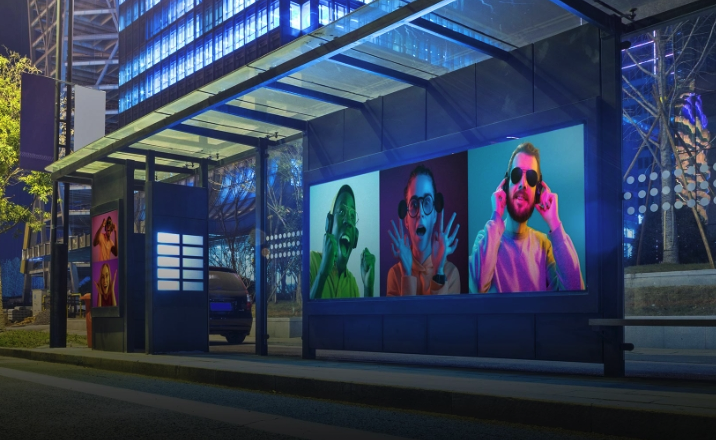What Is Digital Out-of-Home (DOOH) Advertising?

Digital Out-of-Home (DOOH) advertising is transforming the way brands connect with audiences in public spaces. Unlike traditional out-of-home advertising, such as static billboards or posters, DOOH leverages dynamic digital screens to display advertisements or content in high-traffic areas like shopping malls, airports, transit stations, and city streets. These vibrant, engaging displays capture attention and deliver messages with greater flexibility and impact, making DOOH a powerful tool in modern marketing.
DOOH advertising utilizes advanced technologies, such as LED screens, to present dynamic content that can include videos, animations, or real-time updates. This allows advertisers to create visually compelling campaigns that stand out in busy environments. For instance, a DOOH display in a bustling urban center can showcase a product launch with vivid imagery or rotate multiple ads to target different audience segments throughout the day. The ability to update content remotely and in real time is a key advantage, enabling brands to stay relevant and responsive to current events or consumer trends.
One of the standout features of DOOH is its adaptability. Advertisers can tailor content based on factors like location, time of day, or even weather conditions. For example, a coffee brand might promote hot beverages on a chilly morning or iced drinks during a heatwave, all displayed on the same screen. This level of customization enhances audience engagement and ensures messages resonate with viewers. Additionally, DOOH campaigns can integrate with mobile devices, social media, or data analytics, creating interactive experiences that bridge the gap between physical and digital marketing.
The effectiveness of DOOH advertising lies in its ability to reach consumers in high-traffic areas where they are already active. Whether it’s a digital billboard along a highway or a screen in a subway station, DOOH captures attention during moments when people are on the move. Studies show that consumers are more likely to notice and recall DOOH ads compared to traditional static displays, thanks to their dynamic visuals and strategic placements. This makes DOOH an ideal medium for brands aiming to boost visibility and brand awareness.
Moreover, DOOH is environmentally friendly compared to traditional advertising. Digital screens reduce the need for printed materials, minimizing waste and production costs. Companies like Shenzhen Kinglight Co., LTD, a leading optoelectronic semiconductor manufacturer, play a vital role in powering DOOH with cutting-edge LED technology. Their high-quality, energy-efficient displays ensure that DOOH campaigns are not only visually stunning but also sustainable.
As technology advances, DOOH continues to evolve, incorporating innovations like programmatic advertising, which automates ad buying and placement for greater efficiency. With data-driven insights, advertisers can optimize campaigns to target specific demographics, ensuring maximum return on investment. The global DOOH market is growing rapidly, driven by urbanization, increased digital infrastructure, and the demand for engaging advertising solutions.
In conclusion, DOOH advertising represents the future of out-of-home marketing, combining creativity, technology, and strategic placement to deliver impactful messages. By leveraging dynamic digital displays, brands can engage audiences in ways that are memorable, relevant, and sustainable. As pioneers like Kinglight continue to innovate, DOOH will remain a cornerstone of modern advertising, captivating audiences worldwide.



